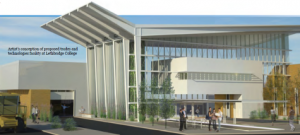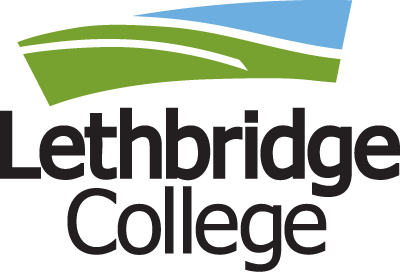 As a centre for innovation, the college’s proposed trades and technologies facility will include a “living” laboratory, focused on developing and teaching innovative ideas and initiatives, many of which will focus on sustainability.
As a centre for innovation, the college’s proposed trades and technologies facility will include a “living” laboratory, focused on developing and teaching innovative ideas and initiatives, many of which will focus on sustainability.
Lethbridge College is going back to the drawing board, this time to design a centre of learning in trades, technologies, applied research and innovation to serve the changing educational landscape in southern Alberta for generations to come.
The new facility will become a centre that fosters cross-over innovation among students, instructors and industry partners, a major facet of the college’s academic vision. The college envisions a facility of far greater impact than mere steel and glass, one which will create enhanced learning and encourage students to seek solutions for tomorrow’s challenges.
It’s an ambitious project, one of the largest in the city’s history. Yet, the outcomes will be rich in reward, training future generations in a modern location that wrings every drop of advantage from the dollars spent.
“This is not a want, it’s a need,” says Steven Dyck, Lethbridge College’s executive director of advancement, whose department will be responsible for digging up the dollars. “No longer will the entrance to our trades wing be at the back of our campus. In fact, the facility will anchor a new ‘main street’ to the college’s south entrance and improve circulation, student spaces and campus navigation.”
The project represents the next generation of trades and technology careers and is part of a much larger picture for the transportation and construction industry, says Peter Leclaire, Lethbridge College’s vice-president academic and chief learning officer.
“It incorporates a new academic vision in industrial training, blending trades and technology to help drive the economy in southern Alberta,” says Leclaire.
The multi-disciplinary space, designed for flexibility in use, allows the college to meet the fluctuating needs of the economic climate.
“Right now, our existing facilities do not easily support the re-purposing of shops as instruction and learning models change,” says Leclaire. “The new facility will allow us to respond to those fluctuations in demand for specific training.”
Rather than merely replacing its shops, Lethbridge College will explore new models of apprenticeship training to make best use of the money spent.
“It will create a learning facility that is highly functional and designed for optimum utilization,” says Leclaire.
As a centre for innovation, the project will include a “living” laboratory, focused on developing and teaching innovative ideas and initiatives, many of which will focus on sustainability in alternative energy, transportation and building construction technology.
As such, the building will be constructed in a sustainable manner, built to embody Lethbridge College’s commitment to leadership in reducing its environmental footprint.
Last September, Lethbridge College signed the Pan-Canadian Protocol for Sustainability as a member of the Association of Canadian Community Colleges. The protocol calls on all signatories to maximize their contribution to a sustainable future and be committed to their roles as leaders and their onand off-campus communities.
Why all this now? Lethbridge College is a major player in the province’s trades training mandate, yet the physical condition of its trades building has created challenges for instructors to improve learner outcomes and support emerging technologies.
This comes as technology is on the wing (literally, if one considers wind turbine technician training) and modern facilities and equipment will be key to maintaining Alberta’s educational advantage. This new facility will also house the college’s International Wind Energy Academy, placing it in proximity to a newly erected training tower just south of the existing building.
Other programs to be housed in the building include the Crooks School of Transportation, Welding and Electrical programs, Civil Engineering Technology, Geomatics Engineering Technology, Engineering Design and Drafting Technology and Interior Design.
“We can encourage spontaneous interaction between students and instructors to stimulate activity, learning and synergies,” says Sandy Vanderburgh, dean of Applied Arts and Science.
“The project will optimize the sharing of many resources and physical areas such as shops, shop support, classrooms, offices, meeting rooms, informal learning and lounge facilities.”
This initiative neatly corrals programs related to construction, now spread out on campus. Drawing them close provides an opportunity for cross-program pollination. An example of multi-disciplined student collaborations is The Living Home constructed by Lethbridge College, the City of Lethbridge and Cedar Ridge Quality Homes.
The project also enhances Lethbridge College’s initiatives to partner with southern Alberta industries.
“We’ve always sought and encouraged these types of collaborations, which we feel work in both directions,” says Leclaire. “Our faculty and students get an opportunity to tackle real-world problems for industry and therefore enable us to tailor our curriculum to fit a changing skill set. We also benefit from industry’s expertise and, in many cases, its largesse. This type of innovation ensures that we are creating the workforce of the 21st century.”
The next step in the process is to secure the funding, which will require a significant investment from industry and government. Ground could be broken within two years after the money is in place.


